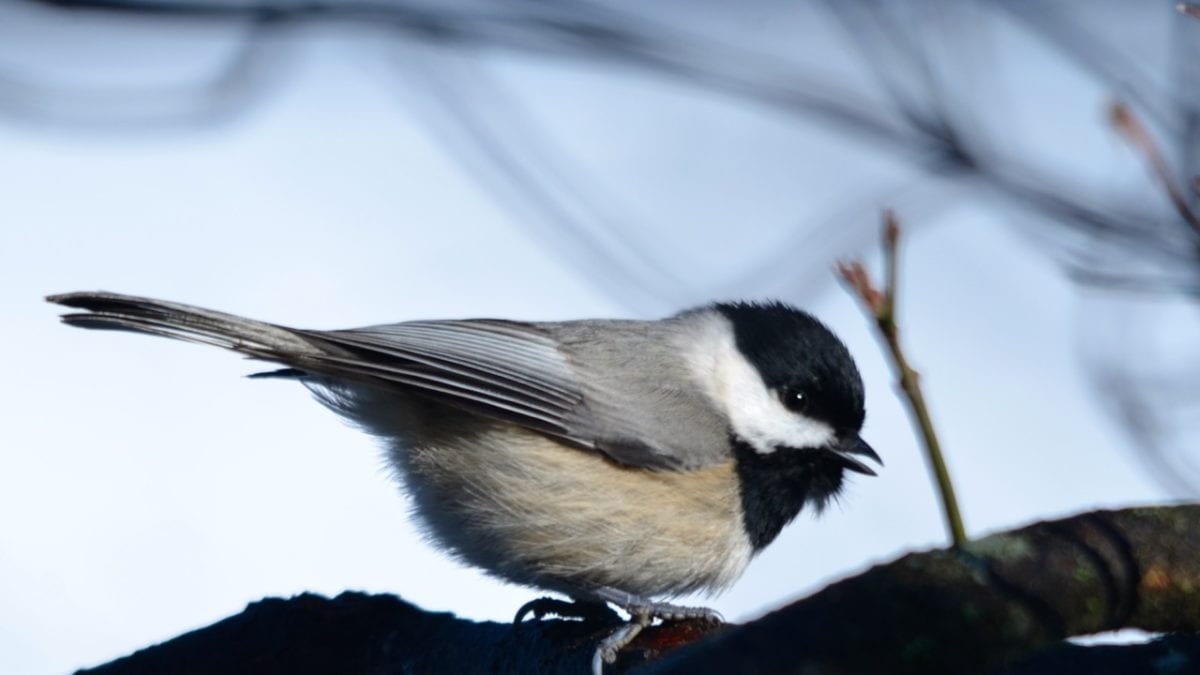
A Carolina chickadee (more photos below): Glynn Wilson
By Glynn Wilson –
MOBILE, Ala. – As the spring bird migration approaches along the Gulf Coast my mind turns to birds.
Soon millions of migratory species will make their way back across the Gulf of Mexico and grace our shores and marshes for a few weeks after their trans-Gulf flight on their way north to the Atlantic coast and Canada.
On their way here from the Yucatan peninsula, many birds may encounter storms or headwinds, and many may die. Why do they not follow the land up from Mexico, like the Monarch butterflies?
Scientists say it’s likely they evolved to take the potentially perilous trans-Gulf route because it is direct and considerably faster, putting the birds on the best breeding territories more quickly.
Watching for signs of trouble with the birds is a worthy scientific pursuit, even problems from the effects of pollution and climate change.
Some birds choose to remain in our yards for the winter, braving the rain and cold here, like these Carolina chickadees [Poecile carolinensis], which seem to be everywhere I travel. I’ve seen them while camping in Maryland, Virginia, and Yellowstone in Wyoming, the Grand Canyon in Arizona and even New Mexico, although they may go by different names, such as the black-capped chickadee [Poecile atricapillus] or mountain chickadee [Poecile gambeli].
Black-capped chickadees suffer from beak abnormalities in Alaska –

An Alaskan black-capped chickadee with a beak deformity: USGS
They even exist in Alaska, and new research is showing they are having a hard time with a virus there, causing debilitating beak overgrowth and other abnormalities.
One federal agency, the U.S. Geological Survey, is looking into this problem. You can begin to see the research here.
The upshot is that over the past 20 years, Alaskans have witnessed a startling increase of beak deformities among black-capped chickadees and other species of resident birds, which appear to be suffering from a disease called avian keratin disorder (AKD). It is characterized by debilitating beak overgrowth and other abnormalities of keratinized tissues. Affected birds have difficulty feeding and preening, and may suffer high rates of mortality.
Research began in 1999. Since then, more than 3,000 affected Black-capped Chickadees in Alaska have been identified, the highest concentration of gross deformities ever recorded in a wild bird population.
Increasing numbers of other species, including Northwestern Crows, Downy Woodpeckers, Steller’s Jays, and Black-billed Magpies have also been observed with beak deformities throughout the state. Growing numbers of reports from North America and Europe suggest that AKD may be spreading to a larger geographic area.
In 2016, the novel picornavirus (Poecivirus) was identified in Alaskan Black-capped Chickadees with AKD.
“We’ve subsequently confirmed a strong association between Poecivirus and beak deformities in chickadees and detected a closely related virus in other species with similar beak deformities,” scientists conclude in their most recent research. “Together, this evidence suggests that Poecivirus is a likely candidate cause of AKD.”
Investigations are focusing on understanding more about this virus, including how it may be contributing to beak deformities, whether it occurs in multiple species and how it is transmitted.
Other factors were previously considered, including environmental contaminants, nutritional deficiencies and parasites. No clear evidence was found linking any of these to AKD in Alaskan birds.
The agency is asking the public to participate in helping the research by reporting any sightings of affected birds. Reports from the public help us to determine where and how many birds are. They list contact information here.
Meanwhile back to our Carolina chickadees, according to Cornell University’s All About Birds Guide, John James Audubon named this bird while he was in South Carolina.
“The curious, intelligent Carolina Chickadee looks very much like a Black-capped Chickadee, with a black cap, black bib, gray wings and back, and whitish underside,” they say. “Carolina and Black-capped chickadees hybridize in the area where their ranges overlap, but the two species probably diverged more than 2.5 million years ago.”
We just love having them around, and hope nothing bad happens to them.
More Photos

A Carolina chickadee: Glynn Wilson

A Carolina chickadee: Glynn Wilson

A black-capped chickadee: Glynn Wilson

A Carolina chickadee: Glynn Wilson

A Carolina chickadee: Glynn Wilson













